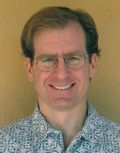Your Ah Haa Moment: Elegant holiday cooking
[click "Play" to listen to Susan talking with Bertrand Marchal] Longtime Telluride locals referred to them as les deux Bertrands, the two Bertrands: Bertrand Lepel-Cointet, now deceased, worked the front of the house. Bertrand Marchal was the chef. Together, the two owners turned La Marmotte Restaurant into a local institution.
Longtime Telluride locals referred to them as les deux Bertrands, the two Bertrands: Bertrand Lepel-Cointet, now deceased, worked the front of the house. Bertrand Marchal was the chef. Together, the two owners turned La Marmotte Restaurant into a local institution.






